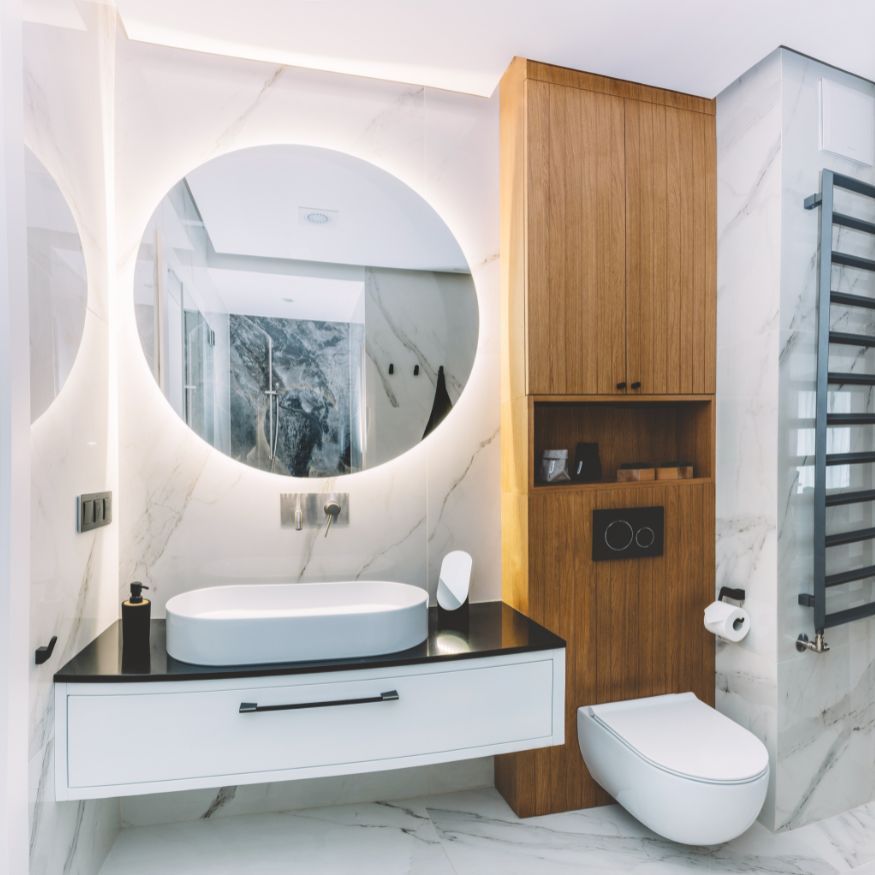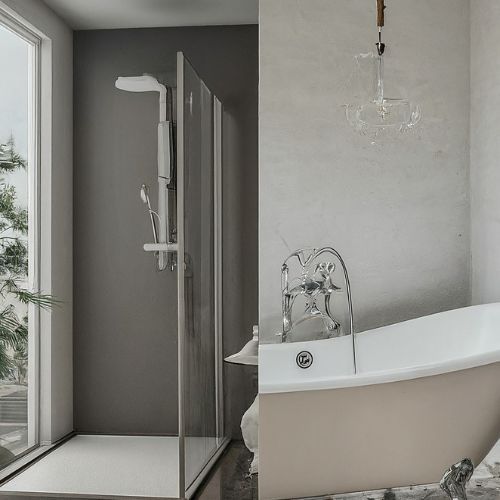Expert Tips and Product Solutions to make your Bathroom Accessible
Making your bathroom more accessible
If you require assistance in the shower or are a wheelchair user seeking a fully accessible bathing experience, you may be wondering where to start. How do you determine the best accessible products for your needs? At Parish Bathrooms, we specialise in designing bathrooms for people with limited mobility whether that is due to a disability or just because they are getting on in years.
In this in-depth guide, we will explore key considerations when creating an accessible bathroom and provide insights into a range of products tailored for people with different mobility levels.
Space:
When designing an accessible bathroom, one of the primary considerations is space. It is crucial to evaluate the manoeuvrability within the bathroom and identify the optimal placement for essential elements, such as baths or showers and grab rails.
Grab Rails:
Grab rails are a common feature in accessible bathrooms, providing valuable support and enhancing safety. These rails come in various shapes, sizes, and colours, ensuring a perfect fit for your needs and bathroom design.
Straight Grab Rails:
Straight grab rails are a popular choice due to their versatility and ability to fit even in small spaces. They provide support for shower use or assistance when entering and exiting the bath.
Curved Grab Rails:
In addition to practicality, curved grab rails can add a touch of style to your bathroom. The curved design enhances grip and prevents your hand from slipping down the rail, offering added security.
Angled Grab Rails:
Angled grab rails supplement straight grab rails by providing extra support, particularly when a gradual increase in gradient is required. These rails are helpful for activities like gradually raising oneself off the toilet or a shower seat.
Hinged Support Rails:
Ideal for installation near toilets, hinged support rails assist users in getting on and off more easily. The ability to fold them out of the way when not in use makes them suitable for bathrooms shared by multiple individuals.
Back Rest Rails:
Backrest rails are perfect for shower seats or back-to-wall toilets, providing additional comfort and support to the user.
Raised Toilets:
If using a standard toilet presents challenges, regardless of the specific issue, a raised toilet is generally more suitable for people with mobility issues. The additional height provided by a raised toilet seat enhances safety and stability. It reduces the risk of falls and accidents that may occur when individuals strain or lose balance while attempting to lower themselves onto a standard toilet seat.
Toilet Risers:
Toilet risers are a simple and effective solution for individuals with arthritis, making it easier to use the toilet. By fitting over existing toilets seamlessly, these risers blend with any bathroom decor, resembling standard toilets.
Accessible Wash Basins:
For individuals struggling to reach standard pedestal basins, our range of disabled basins offers a practical solution. A basin without a cabinet underneath is a good option for wheelchair users, enabling them to access the taps with ease and wash their hands comfortably.
Additionally ensuring the basin is at the most appropriate height for you is also important to save you form over reaching or stooping unnecessarily
Accessible Taps:
Accessible taps combine functionality with attractive design. Depending on your needs lever handles may be a good option for you. Another consideration is whether you opt for single or duo levers. Many accessible taps also have anti-scald features to keep the water temperature at a safe level and prevent accidental burns
Bath or Shower?
Deciding between a walk-in bath or a walk-in shower is a crucial consideration when planning an accessible bathroom. This decision depends entirely on your requirements. Walk-in baths can help with arthritic conditions but they can take a while to fill up and drain away. Walk-in showers tend to be more convenient (and popular). When deciding on which option is best for you take in to consideration how your condition is likely to evolve over time.
Shower Seats:
If showering while standing is challenging, a shower seat can be an excellent solution. Parish Bathrooms offers a wide range of shower seats in various shapes, designs, and sizes to suit individual needs. From simple folding seats to padded seats with arms and backrests, we have options to cater to different support and stability requirements.
Anti-slip floors:
To enhance safety for vulnerable individuals or those with unsteady footing, installing an anti-slip floor essential to help prevent slips and falls.
Wet Rooms: Wet rooms offer the highest level of safety and accessibility, eliminating slip and trip hazards. They provide an ideal environment for installing grab rails and shower seats, ensuring a truly secure showering experience. Wet rooms can also be a good option if you need assistance when bathing from a carer.
Conclusion:
Many people need accessible bathrooms for lots of different reasons. Some people need a full adaptation of their bathroom whilst many just need grab rails and a walk-in shower. What is appropriate for you is entirely dependent on you condition and how it is likely to evolve over time.
Whatever you need it is wise to take advice from a specialist who has experience in installing accessible bathrooms. This is because, whilst they may not look very different from a traditional bathroom they do require specialist knowledge and techniques to install.
About Parish Bathrooms
Parish Bathrooms specialise exclusively in installing mobility friendly accessible bathrooms for customers throughout Hampshire, Dorset and Wiltshire.
Contact us today to discover how we can assist you in designing an accessible bathroom tailored to your specific requirements.
Contact Us
You might also like




